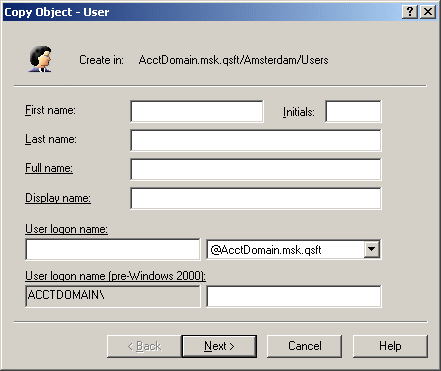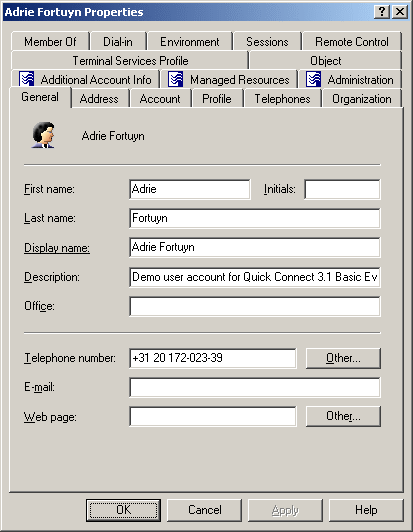To create a copy of a user account, right-click the account, click Copy, and then follow the instructions in the wizard. The first step of the wizard looks as shown in the following figure.
Figure 5: Copying a user account

The copy of a user account belongs to the same Windows groups as that (original) user account.
To modify user account properties, right-click the account and click Properties. You can make changes to user account properties in the Properties dialog box, shown in the following figure.
Figure 6: User account properties

In the Properties dialog box, some property labels may be displayed as hyperlinks. The hyperlink indicates that Active Roles enforces certain policy restrictions on the property. To examine policy details, click the hyperlink: the policy information is displayed (see Getting policy-related information earlier in this document).
The policy information is also displayed whenever you supply a property value that violates a policy restriction. Property changes cannot be applied until you enter an acceptable value.
You can use the Properties dialog box to view or modify any property of the user account: go to the Object tab and click Advanced Properties. In the Advanced Properties window you can manage all properties, including those that cannot be accessed via the Properties dialog box itself.
You can also display the Advanced Properties window as follows: right-click the user account and select All Tasks | Advanced Properties.
|

|
NOTE: In the console, you can select multiple user accounts, right-click the selection, click Properties, and then modify properties of all the selected accounts collectively via the Properties dialog box. |



